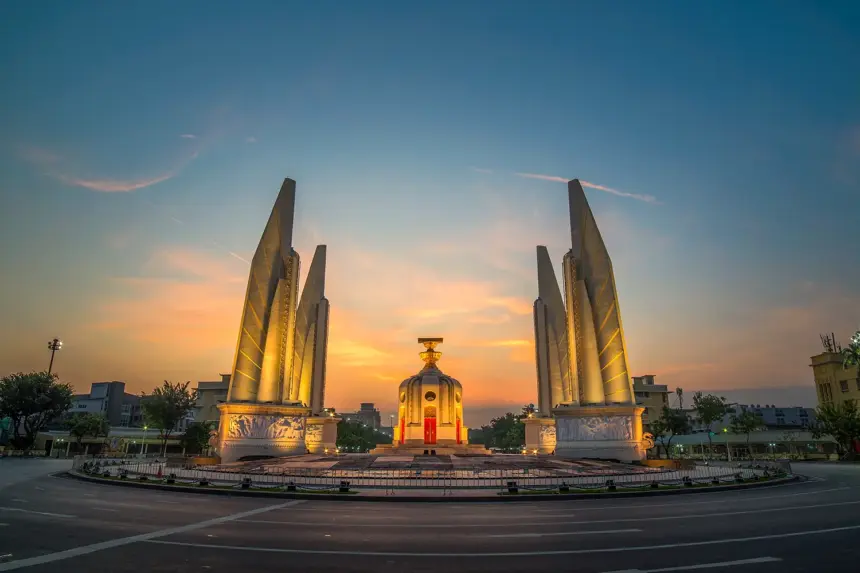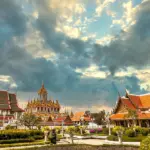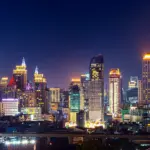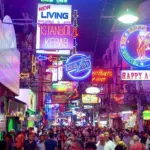Democracy Monument in Bangkok: A Symbol of Thai Political History
The Democracy Monument, situated at the heart of Bangkok, Thailand, is one of the country’s most iconic and historically significant landmarks. Located on Ratchadamnoen Avenue, the monument has become synonymous with Thailand’s struggle for democracy and political reform. It serves not only as a reminder of the country’s shift from absolute monarchy to a constitutional one but also as a focal point for political protests, debates, and public gatherings.
In this article, we’ll explore the historical background of the Democracy Monument, its architectural significance, its role in Thai political history, and its current relevance in contemporary society.
Historical Background of the Democracy Monument
The Democracy Monument was erected in 1939 to commemorate the Siamese Revolution of 1932, which marked the end of absolute monarchy in Thailand. The revolution was orchestrated by a group known as the Khana Ratsadon (People’s Party), which included military and civilian elites who sought to reform the political system of Siam (now Thailand).
Before 1932, Thailand was ruled under an absolute monarchy with the king holding supreme authority over the nation’s governance. The revolution, though bloodless, was a significant turning point in Thai history, as it led to the establishment of a constitutional monarchy, where the king’s power would be checked by a parliamentary system. The Democracy Monument was designed to commemorate this event, symbolizing the introduction of democracy in the country.
Field Marshal Plaek Phibunsongkhram, one of the leaders of the revolution and then-prime minister, commissioned the construction of the monument as part of his wider plan to modernize and Westernize Bangkok. The construction of the monument was completed in 1939, seven years after the revolution, as part of an initiative to celebrate Thailand’s new political order.
Architectural Design of the Democracy Monument
The Democracy Monument was designed by Corrado Feroci, an Italian-born sculptor who later became a naturalized Thai citizen and adopted the name Silpa Bhirasri. He is often considered the father of modern Thai art and architecture, and his influence can be seen in numerous monuments and sculptures around the country. For the Democracy Monument, Bhirasri was tasked with creating a structure that not only captured the essence of the 1932 revolution but also symbolized Thailand’s aspirations for progress, equality, and modernization.
The monument consists of a central pedestal on which rests a carved representation of the Constitution of 1932, symbolizing the birth of constitutional democracy. This constitution is depicted as a book, resting on two golden offering bowls, known as Phan, which are traditionally used in Thai culture to present gifts to the gods. The constitution is the focal point of the monument, representing the foundation of Thailand’s political system.
Surrounding the central pedestal are four large wing-like structures, each standing at a height of 24 meters (78 feet). These wings are symbolic in nature:
- They represent the four branches of the Thai military that supported the 1932 revolution: the army, navy, air force, and police.
- The wings also evoke the idea of protection and defense of the new democratic system, symbolizing unity and the safeguarding of constitutional governance.
Each of the wings also carries its own subtle symbolic meaning. The height of 24 meters represents June 24, 1932, the exact date when the revolution took place, and the overall design of the monument reflects the fusion of traditional Thai art and modernist architectural trends of the early 20th century. The wings are adorned with bas-reliefs that depict scenes from the 1932 revolution, as well as moments of Thailand’s political history, reinforcing the monument’s connection to the birth of democracy in Thailand.
Political Significance of the Democracy Monument
Since its erection, the Democracy Monument has been more than just a commemorative structure; it has served as a physical and symbolic center for Thailand’s political life. Given its connection to the establishment of democracy, the monument has been the site of numerous political protests, movements, and events over the decades.
- Protests and Demonstrations:
Over the years, the Democracy Monument has been a focal point for political gatherings, particularly during times of political unrest or when the people have sought to challenge the government. The monument was the site of mass protests in October 1973, during the Student Uprising, which led to the ousting of the military dictatorship of Field Marshal Thanom Kittikachorn. The monument became a symbol of the people’s fight for democracy, and images of protestors gathered around the Democracy Monument became iconic during that period. Similarly, during the 1992 Black May protests, which sought to end the rule of General Suchinda Kraprayoon, the Democracy Monument once again played a central role in the protest movements. Protestors gathered around the monument to demand democratic reforms, resulting in violent clashes with the military. - 2006 and 2010 Political Movements:
In more recent times, the Democracy Monument was a key rallying point during the 2006 protests that led to the military coup ousting Prime Minister Thaksin Shinawatra. It was also central to the 2010 Red Shirt protests, where thousands of demonstrators gathered around the monument, demanding political change and social justice. - 2020–2021 Pro-Democracy Protests:
The Democracy Monument also played a significant role in the 2020–2021 pro-democracy protests led by students and activists demanding constitutional reforms, greater democratic freedoms, and the reduction of the monarchy’s influence in Thai politics. The protests attracted global attention, and the Democracy Monument once again became the backdrop for mass gatherings, speeches, and calls for change.
The monument has thus been a constant reminder of the struggle for democratic reform in Thailand. Its very name invokes the aspirations of the Thai people for a political system that ensures equality, justice, and representation for all.
Cultural and Symbolic Relevance
Beyond its political significance, the Democracy Monument is deeply embedded in Thailand’s cultural landscape. It has become a symbol of modern Bangkok, serving as a popular tourist attraction and a recognizable landmark on Ratchadamnoen Avenue. The surrounding area is filled with important historical buildings, including the Ananta Samakhom Throne Hall and the Grand Palace, making the monument part of a broader narrative of Thailand’s transition from monarchy to modern statehood.
The monument’s design reflects a blend of traditional Thai culture and Western modernism, which mirrors Thailand’s broader efforts to modernize in the 20th century while maintaining its cultural heritage. The central Constitution of 1932 symbolizes the legal foundation of the state, while the surrounding wings express the ideals of protection, unity, and national defense.
For many Thais, the monument holds both pride and a sense of reverence. It is not only a memorial to past struggles but also a reminder of the ongoing fight for democracy and the challenges that the country continues to face.
Current Status and Future Role
In the present day, the Democracy Monument remains a vital part of Bangkok’s urban landscape. It continues to be a site of public discourse, political activism, and national reflection. The area surrounding the monument is a bustling hub, with restaurants, shops, and cafes that make it a gathering place for both locals and tourists.
The monument also plays a significant role in national ceremonies, including events commemorating the 1932 revolution and various public holidays. Its future role in Thailand’s political life remains crucial, as the country navigates its path toward democracy amid a complex and ever-changing political landscape.
Conclusion
The Democracy Monument in Bangkok is much more than just a physical structure; it is a symbol of Thailand’s political history, struggles, and aspirations. Over the decades, it has witnessed numerous political changes and continues to be a powerful site of protest, reflection, and remembrance.
Its architectural beauty and symbolic design stand as testaments to Thailand’s complex journey toward democracy. As a living monument, it remains central to the ongoing political narrative of the country, reminding both Thais and visitors of the nation’s historical struggle for political freedom and justice.

